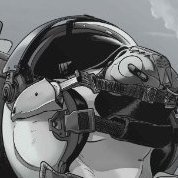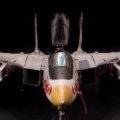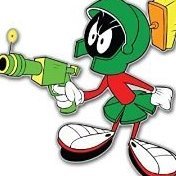Leaderboard
Popular Content
Showing content with the highest reputation on 07/30/2022 in all areas
-
I noticed this in the Warbird Information Exchange Group on Facebook. Earlier in the week a Pacific correspondent I follow on Twitter, posted a pic of a Betty vertical stab on a trailer behind a Hilux in town. Salvaging these wrecks seems like a bit of thing. I've stood on the beach at Buin and looked across the strait to this island. It was where Yamamoto was heading before that incredible mission by P-38's to intercept and assassinate him. The Island has a very dark history though that typify how brutal the Pacific War was. Post WW2 the history gets even more interesting and whilst not at the time, probably pretty controversial these days. More details in the airfield and the wrecks previously salvaged there. Hope you find it all interesting. I was lucky enough to get to Kahili airfield and see various aircraft there. Lots of bomb craters as well. Matty9 points
-
Another model off the bench. Canadian (false so far) markings used, just for fun. Calling this one finished,the canopy is only set in place, not glued down as yet. Thanks for looking8 points
-
A little progress. This build is going a bit slow but should speed up a little soon. I decided to use the kit compressor face although it is overscale. The intake trunk of the Hasegawa kit matches the Academy closely after a bit of sanding. The underside is now almost complete. Time to the upper section of the kit. Cheers Nick7 points
-

Turkish Black Hawk Phantom II
Uncarina and 5 others reacted to themongoose for a topic
This is Revell's 1/32 scale 1983 boxing of the Phantom :-) Done to the new IPMS Basic Kit Build rules. Beyond the paint scheme I thinned the trailing edges, drilled out the fuel vents and other miscellaneous vents on the aircraft, painted in some vents as well, and made everything that I could work just the way Revell wanted it to be for the kids who originally built these...just like me, a big kid now :-) You can check out the full build by following the link in my sig if interested In memory of Jason - USMC Herc. Semper Fi6 points -

USMC Herc Honorarium - Kara Sahin Phantom - Finished!!
Kagemusha and 5 others reacted to themongoose for a topic
Many thanks guys! Such a great tribute. Finished strong with a 2nd place at Nationals too!6 points -
I did some design work and have this to hand for the 1/24 Airfix Bf109E i need to tweak it still to thin the end section frames and some other refinements, but was thinking I could add it to our range? It's quite a big fret so would need to retail for £21.95 so still undecided any love? works with kit parts, or as here can be easily glazed.. Peter5 points
-
I am glad that I took the trouble to fab up a couple of "proof of concept" panels. It paid off. Lessons learned from that, plus verification that the concept was viable (hybrid panel with magnets), allowed me to produce four virtually error-free engine cowl panels: Note also the dog-bone shaped splice plates at the joints. The all important view from the front: A rear view showing how well (or poorly) the panels lay down on the cowl flap ring: It'll do! I tell you - back to back magnets (as I used at the nose cowl) works great. The panels just snap into place. Magnets and stainless steel sheet, where the magnets are underneath a thin layer of plastic (I used this at the cowl flap ring), doesn't work nearly as well. The attraction is a little weak. I had to do that way. So I had to fiddle around a whole lot with the panel contours to get them to lay down decently. The insides - supposed to be painted either gray or white - I chose gray, and then got them nice and dirty: You might wonder how I am to properly clock four cowl panels, where there is nothing for any of them to butt up against. This is how I did it: First I installed a small "alignment pin" on the bottom of the nose cowl: That pin engages a slot on the inside of either bottom panel: Installed it looks like this: Once one panel is located, then the other three are easily located. This shot shows that without a doubt, a panel (or all of them) can be removed to show the engine - a goal of mine since I started this build: Lastly, for the "it's beginning to look like a Corsair" file, this shot: I have sent off a 3D print order, and the parts will be in my hot hands in a week or two. Included in that order are corrected cowl flap details, and once I have them I can proceed on the very difficult cowl flaps. In the mean time - I dunno, I suppose I will finish skinning the wing upper surfaces..... Thanks for looking in folks.4 points
-

Takom 1:16 Panzer IB
mustang1989 and 3 others reacted to LSP_K2 for a topic
And the Panzer finally has its base coat of grey. I have to say I hate the way this MRP sprays, and seriously doubt that I'll buy any more, other than perhaps base colors, but certainly not for camouflage colors like this vehicle needs. And oh my does it ever stink up the place. I am very happy with the color though, and that's a major plus.4 points -
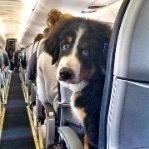
1/16 scale scratch built AT-38B Talon-The Smurf jet is back!
Azgaron and 3 others reacted to Pete Fleischmann for a topic
A little more this a:m4 points -
Hello! I finished this about one year ago. I used the Trumpeter kit, Eduard PE and Quickboost exhausts (as far as I remember). The figures are slightly converted ICM figures, backdated to 1941 (no shoulder straps in the soviet army till 1943) and equipped with resin heads. The crows are from Preiser. This project was big fun and there were no issues with the kit as far a I remember. The markings were sprayed using Montex masks. I hope you like it! Best regards, Andreas3 points
-
Slots cut out for the slat rails, and a test fit done to see if it aligns well. Then the rails will be glued onto the slat. The two screw jacks below the leading edge, and their hinges that fit on the slat still have to be made. Cheers3 points
-
.thumb.jpg.cd22b958c9e88a898a21e18b862c523e.jpg)
Lemkits models are available again
Rick Griewski and 2 others reacted to upor for a topic
Friends, I'm already in Kyiv. A couple of days of adaptation to the new reality and I will start fulfilling pending and new orders. https://lemkits.com/ https://www.ebay.com/usr/ruporator/ Thanks for support. p.s. Air Raid Signals and roadblocks do not fit in the mind - the 21st century .... Normal people fight diseases, make scientific discoveries and get ready to fly to Mars - But clinical idiots attack the neighboring country without any idea, hiding behind a distorted story invented by their epileptic pseudo-emperor .... Take care of the peace and yourself.3 points -
Was given this one, It'll hold a special place in my collection!3 points
-
Thanks guys! Appreciate the feedback! Look at what I got in the mail! Woody of Archer Fine Transfers was kind enough to send me a set of Fw190 Control Surface decals to try out. This is an improvement that I've not considered before but is meant to replace the simplified stitching detail on the kit part. The resin pattern on decal film creates a subtle raised detail of a fabric-covered control surface. First step is to remove the raised detail on the kit control surfaces. I'm starting off with the horizontal stabilizers. Since the decal film is continuous, each piece needs to cut and trimmed closely to eliminate excess film. I used a sharp x-acto blade to trace the outline of the control surface shape. I did not use any setting solution underneath the decal but Woody suggests Mr Mark Setter for better adhesion if masking is planned. After the decal is placed, a soft brush is used to gently remove any excess water or bubbles from underneath the decal. Micro Sol was applied as a final step. I will seal the work with a primer after these dry thoroughly. The rudder on the Ta152H tail seems to be ever so slightly different than the normal Fw190 rudder but appears close enough for the decal to work. I'm going to save that for last as I get used to working with this material.3 points
-
decals tested https://www.facebook.com/infinitymodels.cz/photos/pcb.144605408246619/144605364913290/3 points
-
Kitty Hawk 1/32 HAF Mirage 2000 EGM
F`s are my favs and one other reacted to spyrosjzmichos for a topic
Hello everyone! Kicking my 2022 build season with Kitty Hawk's 1/32 kit of the Mirage 2000C. The plan is build a worn down Mirage 2000 EGM of the Hellenic Air Force. In terms of aftermarket sets, I will be using Grand Model's resin cockpit and wheels, KASL Hobby's corrected nose and LM Decals. I started by first installing the intakes in their respective fuselage halves. I tend to do this at this early stage as I find it much easier to deal with gaps and blending. With that said, the overall fit was actually quite good! Only issue I had was installing the clear window on the top side of the left intake. Since the plastic was too thick it wouldn't allow the clear part to sit flush with the intake wall. Thankfully, my dremel tool made quick work of thinning down the wall enough to properly install the window in place.2 points -

Avro Anson…though wrong scale!
D.B. Andrus and one other reacted to mozart for a topic
Now this is looking rather fantastic!2 points -

A few Springbank (Calgary) Air Show pics.....
Alain Gadbois and one other reacted to chuck540z3 for a topic
I love airshows, but like everyone else, I hate the hassle of entering and leaving the venue due to the large crowds that go with them. I especially like the “Aviation Nation” airshow at Nellis AFB (Vegas) every couple of years, which I will be attending this November, but you can easily spend 1 ½ hours getting onto the base and another 1 ½ hours leaving the base, for a total of 3 wasted hours of standing in line. Thankfully, this air show is always worth the wait, especially if you like fighter jets like I do. There are no worries about what fighter jet might show up, because all the key ones live at Nellis, including the Thunderbirds. F-15’s, F-16’s (usually Aggressors), F-18's (Navy comes every year), F-22’s and now F-35’s are all a given, with lots of other cool aircraft like Warbirds fill the skies. Here in Calgary we don’t have any big airshows, but we often have a small one on the western outskirts of Calgary at the small Springbank Airport, which is going on today and tomorrow. I know from experience that getting in and out of this airport is a really big hassle, so I wasn’t planning on attending, knowing that I was getting my airshow fix at Nellis in November anyway. It turns out, however, that most of the airshow acts do a practice run on the Friday and the Canadian Snowbirds sponsor a VIP tent right on the main runway, for families with children who have Cerebral Palsy. Through some connections I was asked if I would like to attend, to take some pictures of the kids and transport a few of the attendees to and from the show. Hell Yes! So my wife and I attended this mini-show yesterday and as advertised, there was only about 80 of us with front row seats- and no other people, other than those who collected in the deep background to get a glimpse of what was going on. Very cool, and a real tribute to the Snowbirds for sponsoring this charitable event. With that long preamble out of the way, here are a few pics of the show and for privacy reasons, I will stick to the aircraft pics only and not the many “people” pics I took. While photography is another hobby of mine, I don’t have any of the super long prime zoom lenses (400 mm+) that are required to capture airshow acts cleanly, since I would rarely use them and they are super heavy and expensive. Instead, these are some pics using my Nikon Z7 II camera and a 70-200 mm f 2.8 lens, which is great for people shots, but not so good for aircraft flying by at high speed. With the big 45.7 MP sensor of this camera, however, I was able to digitally zoom in a bit further than 200 mm with a few decent results. The main act for me is the Canadian CF-18A Legacy Hornet, which is showing its age, but man can it still put on a great show! These demo jets are usually brightly painted in a new scheme every year, but for some reason this year is just two tone grey in an almost digital pattern. This pic also gives you an idea of how close we were to the performing aircraft. My next favorite aircraft, as always, is the P-51D Mustang. I’m not sure where this beauty came from (California?), but it was gorgeous! A bit closer. Note the “back-up” Hornet in the background. First act were parachutists, waving the Canadian flag. And also recognition of our American friends and performers. Next were three Pitts Specials of the Northern Stars Aerobatic Team, who are Canadian RCAF veterans. These guys are good…. There were two Mustangs that flew, like the one above that is called “Grim Reaper”. Note the dark clouds starting to roll in, which eventually shortened the airshow later due to lightning. And another P-51D, which is an obvious tribute paint scheme of the Tuskegee Airmen from the Erickson Aircraft Collection of Oregon. Not as pretty as the Grim Reaper by a long shot, but it flew just as well and as fast. Take-off. This where a long prime lens would have been much better. I can hear the sound of that Merlin music just looking at it. The other Mustang... Next up was the CF-18, with thunderstorms growing in the background. Take-off, showing how close the airport is to a residential area and the growing wind speed. I think this new paint scheme is supposed to look like a real Hornet? With the humidity building in the air, every high G turn came with a good vapor trail off the LEX. I still love these jets, even if they are old. Speaking of old jets, the last act, and sponsor of our group, were the Snowbirds that fly CT-114 trainers, which date back to the 60’s. While nowhere near as fast as the Thunderbirds and Blue Angels, the skill to fly them in such tight formations is still fantastic to witness, especially since there are usually 9 of them instead of the traditional 6. The Snowbirds had to cut their demonstration short due to the building thunderstorm clouds and a few strikes of lightning in the distance, or I likely would have taken a few more shots. It was time to leave for everyone, so we all packed up and left the airport with NO crowds to hold us back! Pure airshow Nirvana, and a great day for a great cause all around. My wife and I were very touched by the attendees, which on it's own, was well worth our small efforts. Cheers, Chuck2 points -

Make the others jealous
scvrobeson and one other reacted to Neo for a topic
Wow thats one hell of a gift2 points -

Test Build: 1:32 Flying Start Models Tornado F Mk.3 Conversion (Revell base)
Daniel Leduc and one other reacted to Iain for a topic
Tim and I have been discussing this one recently - I need to dig this one out again once the T31 glider is finished. Is there still interest out there in obtaining copies of these conversion parts - and, if so, would there still be interest in just a basic set of parts - no instructions, no decals - but what you've seen here plus a few additional parts? Iain2 points -
Another brief update. On the AIM-7's, I've decided to tone down the scratches on the fins. I think I went a bit heavy on the weathering. Speaking of weathering, I'm plugging away on two of the dirtiest parts of the jet - the main landing gear assemblies. Between grease from lubricating the various linkages, hydraulic drizzles, greasy handed mechanics and copious amounts of brake dust, these things got pretty nasty. Even in peacetime, on operational jets, the gear was somewhat grubby but in war time, with a high mission tempo and the jets sitting out in 100-degree sun or tropical monsoon downpours, it was very unlikely that the hard-working wrenches would spend much time keeping the landing gear clean. Here's a nicely maintained example but you can still see various bits of grime and brake dust on the wheel hub and tire itself. Here is where I'm currently at. So I think I'm going to dial back a bit of weathering on the tie-down rings at minimum The hubs will remain as is. The brakes generate massive amounts of heat and soot, so I think this area will remain untouched, aside from a bit of clean up on the tires (brake dust is simply brick-colored pastels, brushed on). I'll circle back with an update once they are cleaned up and installed. On an unrelated note - if anyone has some good, detailed pictures of the early AIM-9 rails that didn't have the "spacers" to move them further out from the pylons, please feel free to share. The early jets had the rails fixed directly against the pylons, which prohibited any ordinance from being carried. Later on, a mod was introduced to add spacers to move the rails outwards. Here is a nice picture that shows the early mounting, courtesy of the Fundekals instructions. Note that the rails were also angled downwards a bit That's it for now, happy Friday folks.2 points
-
More progress made on the 109, luckily there was quite a bit of building to be done, as anything painting related (like getting the Hurricane painted) is just not on the cards at the moment. WAAAAY to wet and cold (12°C and RH of 68% in the garage - once the wet cars are parked, it just get worse). Will have to wait for a bit of sunshine to dry things out a bit... I've managed to get the major construction work out of the way - wings, flaps, ailerons, horizontal stabs and elevators, putty where needed, canopies are masked. All ready for primer and paint. Quite a bit of filler (Milliput) has been used to try and get a smoother transition between the engine cowling and gun deck cover, plus some rod to fill the gap between those parts (I think this was designed to be a cowl-off kit) The prop assembly has been modded to accept magnets. Both the cannon covers and the slats needed some extra styrene fitted to make them fit. The AM rudder has been drilled and pinned (removable), fitted with the linkage yoke that came with the kit for it's rudder Underside needs some black in the radiator wells before I attach them and mask off for painting. Dragon supplies etched brass linkages for the ailerons and flaps (moveable perhaps)- they are fiddly, and although looking the part, I think that the whole system would be way to weak to support the trailing bits. There are only two attachment points for both the flaps and ailerons - no locating pins at either the wing edge (aileron), or the inner face of the flaps where they butt onto the fuselage. So mine are glued in place! First time I've seen or used those flexible inserts Dragon gave for the wheel wells. I did some reading up on them when I saw them - lot of complaints about being brittle and not usable, but happy to report mine were fine, responded to Mr Hobby S glue VERY well, and worked a treat!2 points
-
A small fix was required to fit the intake to the rest of the fuselage. The recessed part on the Hasegawa kit does not match the Academy nose section. Not even close. The solution was to build the Hasegawa section with plastic card and sand smooth. The easy part. Now for the more difficult part. The Vents on the sides of the Academy intakes do not protrude far enough to match the Hasegawa part. The solution this time was to cut slots in the sides with a razor saw and use gap filling superglue to make the vents wider. Eventually all fit together but with a lot of filling and sanding still to be done. Cheers Nick2 points
-
Across the line... Well finally the beastie is finished! it was an epic build and my first all resin kit. Jetmads did a piece of wonder there even though it shows that they still have kinks to work out. For a resin kit it was humanely priced at $190 for a preorder. They kept the price down with using 3D printing technology and that was a mixed blessing. Even though it got cheaper it demanded more work to remove printlines, I suppose you have to reach compromise of speed and resolution when you have to fill hundreds of orders. Though I think they could have done things a bit better by aligning the parts as to minimize the printlines. For example the cockpit and it's parts suffers greatly from printlines and they are hard to remove. It was actually so bad that the printlines in many cases ruined the fantastic details they put into the model. I found that the best way to remove lines was to brutally scrape with scraping tool or knife. This meant in turn that details on the fuselage had to be removed to asure the best surface treatment. The hardest part was the joining of the fuselage and main wings, it ate lots of putty and was hindered by the hot air exhausts on the fuselage as they were always in the way and got damaged in the blending process. They would have benefitted from being separate parts. The next thing I didn't like that much was the decals, The big sheets were good quality and printed by Cartograf, though they skipped a lot of stencils! As a nerd I frown upon such short cuts! But the air wing insignias were terible, I had a friend print new ones for me that truly made them justice. The resin pitot tubes and probes was another headache...they snapped as fast I looked at them, I finally managed to replace them with brass from Masters 1/32 Gripen set It sounds like I bash Jetmads but I don't really, their product is fantastic and with a wee bit of extra tinkering it would be absolutely, incredebly awesome! My suggestions for improvement is as follows: New instruments, preferably 3D printed acrylic ones like Red Fox or Quickboost. Metal parts for pitot tubes and probes And add the fuselage hot air exhausts as separate parts instead of molded on to the fuselage. Improve the decal sheet These are the big things....all the small things you just have to deal with as a model builder Finally, I truly enjoyed the build and I learnt a lot about working in this media and in the end I got pretty close to what I wanted to achieve.... This is NOT my last Gigant Viggen! Cheers and thanks for all the support during the build!1 point
-
You can try using pins, drill a hole in the bomb, and the rack, add a pin to line things up. The same goes for the MER and TER to the pylon. Of course you have to be accurate to get them to line up. Jari1 point
-
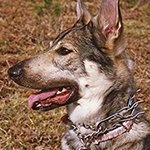
Takom 1:16 Panzer IB
LSP_K2 reacted to josebagasteiz for a topic
Looking forward to seeing how to goes on with the paint job.1 point -
Thanks Max, an interesting read. Perhaps it's my generation - my parents both served in the forces during WWII - but far from "Perhaps not one of the best known aircraft types of the Second World War... ", the Anson seemed to be one of the better-known aircraft. Regarding the undercarriage retraction mechanism, there was apparently many an Air Cadet pleased to be given an air experience flight, and thrilled to be seated next to the pilot, who only found out about the mechanism when tasked to work it. I built the old Airfix 1/72 Mk I many years ago, and I can see one of these kits in my future, especially as there appears to be a turretless option, opening up a world of training possibilities.1 point
-

Gulf War Viper
Cheetah11 reacted to themongoose for a topic
I’m starting to see her take shape! Looks like a well done kit bash so far1 point -
Hi all, This is the 1/32 Hasegawa Bf 109 G-6 done in the Night Fighter scheme of Yellow 17 from Eaglecal Decals. On this build I used the MDC Cockpit, with an Eduard Look Instrument Panel, Master Models Gun Barrels and Pitot, Montex Masks for the Crosses and Barracudacast Wheels and Exhausts. This build is dedicated to Jerry Crandall. All comments and critiques welcome, Thanks for looking, Jeff.1 point
-
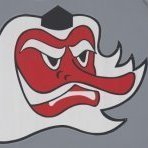
Kitty Hawk 1/32 HAF Mirage 2000 EGM
spyrosjzmichos reacted to Kagemusha for a topic
Great work, such a fine looking aircraft.1 point -
1 point
-
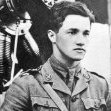
1/24 Airfix F6F-5 Hellcat "Kicked Up A Notch": New eBook Now Available!
chuck540z3 reacted to Bobs Buckles for a topic
Man ALIVE! That is some tidy work right there! Thanks for sharing. Bob1 point -
I dug through a box of photos and found one from my time at Patrick AFB. This is from the base airshow in March of 1983. Ignore the 1LT with his goofy mustache. Some things to notice: 1) No RHAW antennas installed 2) The ILS antenna on the side of the boom is painted body color. (I've seen them painted black elsewhere.) 3) Black paint aft of exhaust. Sembach-based airplanes didn't have this. 4) Prop tips red/black (I've not seen this scheme used elsewhere). 5) I think that's a blue Hamilton Standard logo on the prop (usually these are red, or worn off completely). 6) Black spinner (sometimes these are painted body color in the Euro1 paint scheme) 7) Oil cooler door open whenever gear is down 8) Inlet cover without the vertical bar in the middle. 9) Seat belts are grey-green 10) Seat cushions vary from silvery-green to olive 11) Survival kit olive green with a silver edge where the upper and lower halves join 12) RBF flag is long and has two pins. One goes into the D-ring, and one goes into the ballistic charge. 13) Props in flat pitch1 point
-

Land Cruisers! (And a Hilux)
Jeff T reacted to Pete Fleischmann for a topic
Here’s a before and after- This is what it looked like in Japan when I bought it And where we are now- pretty cool- P1 point -

1/24 Airfix F6F-5 Hellcat "Kicked Up A Notch": New eBook Now Available!
chuck540z3 reacted to LSP_Ray for a topic
Your article is finished! Great job, Chuck!1 point -
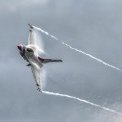
The ‘Viper’ pit - A short break to build other stuff.
Memphis reacted to Stokey Pete for a topic
Just about done. Just a case of dotting i’s and crossing t’s (exhaust and metallics). For some odd reason, iPhone camera makes the paint look grey. It isn’t I promise. How to sum up this one…….I’m not truly happy with the finish on the underside. I knew going in the that decals for the ‘bird’ were never going to fit properly. But I underestimated the lack of consistency in the decal colours. Some were really dark blue, others were a lot lighter. Add to that, the blue that I used to ‘fill in the blanks’ was a different shad again. So the underside looks a little horrific up close and under lighting. But from a couple of feet, acceptable. I think I managed a nice job of the red on the tail, using a hand cut mask. Name plates aren’t accurate for a 2 seat jet, but had to have something there. A bit of artistic licence for that. I made the ‘Thunderbird 8’ decal on the intake from 2 number 3’s laid on top of each other. I’ve added a thinned down Paynes gray wash to highlight panels, and added a few shadows here and there. This one goes down in the “it’s done, but not great” category. The main thing was to get a T’bird in the Viper pit, and to try shoehorning a 2 seater in instead of a single. Basically because I want to use the Tamiya kit for another Nellis Aggressor scheme. 7 down, 3 to go.1 point -
Thanks for the great pictures and the video Finn. Not too worried about the umbilical, it won't show on the loaded AIM-9's and the others two are just going into the spares box. I always wondered how the umbilical connected to the rail, that video was very informative. As mentioned, I did some touchups on the Sidewinders, then used a black wash to highlight a few panel lines No weathering per se, these missiles were downloaded between missions and seemed to stay pretty clean. Next up were the AIM-7's. The Brassin Sparrows are fantastic. Nice decals and very detailed. Unlike the Sidewinders, the AIM-7's got pretty grungy. Note the filthy motor sections in this picture. Also note the odd font used for the missile's serial number. Fundekals was thoughtful enough to provide a wide selection of these numbers in their decal sheet. Another example of how focused they are on the small details. The radomes also got pretty grimy as well. 408th Munitions Maintenance Squadron (MMS) Missile Shop (tripod.com) I noted during the build process that these early Sparrows had a range of markings. Some missiles only had the yellow and brown stripes (indicated a live warhead and live rocket motor respectively), others also had the black stripes as well, per the pic above. Some had the serial numbers on the nose, some didn't. I decided I liked the extra black stripes. They weren't included in the Brassin decal sheet, so I made them from scrap decal material. I added some weathering to the motor section and seeker head, plus a few scrapes to the missile bodies. Also scraped up the control fins. These were often seen lying on the ground when the missiles were being loaded and I've seen some with a few scratches. I'm honestly not sure I like this look or not. I may clean these up a bit. So here are my AIM-7's. Never realized how massive these missiles were until I saw them in 32nd scale. An impressive weapon for sure, however in SEA, during the early phases of the war, they had a horrible kill ratio. A lot of that was due to poor tactics, especially the requirement to get within visual range before engaging a target. Later in the war, the Sparrow got upgraded to the AIM-7E-2 version, known as the "Dogfight Sparrow" due to it's enhanced maneuverability. That upgrade, along with new (classified) hardware that allowed US pilots to ID the bad guys from well outside of visual range, finally allowed the AIM-7 to show what it could do. In the last year of the war, the Sparrow was credited with more kills than the Sidewinder and 20mm cannon combined. This was the start of the modern way of A2A combat for the US - kill the bad guy from long range before he even knows you are there. Anyway, that's it for now, thanks for looking.1 point
-

Flying Start Models Slingsby T.31B - RAF Air Cadets
Model_Monkey reacted to Iain for a topic
And an overview of where we are now - ready for a coat of satin varnish - and some more detail work. It's a pity the camera doesn't really pick up on the DayGlo effect - looks great with the rest of the scheme: And gratuitous 'dry' assembly: This kit has been an absolute delight to build so far - great fun, something different, and hugely rewarding! I believe Tim *may* soon have some cadet figures to go with this kit... Iain1 point -

Flying Start Models Slingsby T.31B - RAF Air Cadets
Model_Monkey reacted to Iain for a topic
More progress! 0.5mm brass wire cut and bent for the wing mounts - this material is supplied in the kit. Here loosely fitted in place and not glued: Tailplane bonded in place - and support struts cut to length from the 0.5mm brass rod, painted red and fitted: Nose and under-fuselage cable connections painted and fitted, along with the main wheel and skid. Skid suitably weathered to depict a worn wooded surface under the paint: All out! Iain1 point -

Flying Start Models Slingsby T.31B - RAF Air Cadets
Model_Monkey reacted to Iain for a topic
Feeling a little guilty as I've been putting off something that I was worried could go horribly wrong... The airframe I'm modelling has DayGlo/Scotchcal sections on the outer wings - complicated by the fact that they follow the radius of the roundels at the inner ends. Main issue was that I'd already applied the decals for the roundels - so didn't want to damage those when removing masking. Solution I came up with was thin paper masks the same diameter as the roundels, cut with a compass cutter, and held in place with a thin strip of Tamiya tape across the middle - parallel to the leading edge. Next I cut circular masks in 'Oramask' masking film, again with the Compass Cutter, and with a radius around 1.5mm larger. These were then applied over the top - using the holes in the centres of both paper and Oramask circles to align. After that, the rest of the areas could be masked up safely using Tamiya tape. These areas were given a very light coat of MRP Luminous Orange (MRP-194) along the edges of the tape, at low pressure, followed by a coat of MRP White to provide a solid background, followed by a final coat of MRP Luminous Orange. Results are shown in the photos - and I'm happy with the results - after a little nail-biting! Letting these areas harden off - then the main airframe parts will get a light coat of satin varnish. Iain1 point -
Looking great John, here's a shot of how the pinch happens ...1 point
-
Got some interior work done. I have some comparisons for you to see, kit vs Barracuda Cast. It is the obvious choice if you plan on doing a project like this. Kit on left, Barracuda, Eduard The Pipe Fitters Union and Electricians are getting things going in the right direction. The Airframers started hammering out the Wheel wells for Eduard PE to follow. The Tritool or something similar makes quick work of this and Bob's your Uncle. That's all for now, Thanks for all the comments, much appreciated. JB1 point
-
My first post on this forum. The modeling in this thread and on this forum is simply unbelievable. George1 point
-

The ‘Viper’ pit - A short break to build other stuff.
RALPHY ROCHA reacted to Stokey Pete for a topic
I’m calling this one done apart from the clear coloured light lenses. I need to replace my paint to do that but will wait until I’ve finished the others now. The eagle eyed will spot my artistic licence work. The AAM’s are training rounds, where the HARM’s are live rounds. In my head, it’s a live fire training sortie using the HARM’s. I don’t even know if they were carried for that era, BUT…..they look so good, I didn’t want to waste them. The engine exhaust nozzle is also incorrect for this particular jet, BUT…..again, I’ve simply used what I had available after the change of paint scheme mid build. No way was SWMBO going to allow me to replace all the goodies to convert it back to another block. So, here it is…. Next up……Thunderbirds 2 seat jet, assuming I can fudge the Tamiya decals onto the Academy kit.1 point -
Wunderbar! I love the Fw190 too so I am looking forward to seeing your unique take on a model that I'm very familiar with. I wouldn't worry too much about doing a subject that's already been done. I debated the same thing when I started my Black 1. We all have unique approaches and I'm sure your build will have things that make it stand out from the rest. The Hasegawa D-9 is almost 20 years old but is still a good kit without any major issues and I'm sure you'll enjoy building it. My D-9 build with the Aires cockpit was not posted here but I'll send you a link if you are interested.1 point
-

The ‘Viper’ pit - A short break to build other stuff.
Memphis reacted to Stokey Pete for a topic
I’m not one for heavy weathering usually. But photo’s and my own sightings of ‘Zeus’ would suggest that the underside of this particular jet is filthy to the point of not seeing the camouflage anymore. I didn’t wanna go the whole 9 yards and make it look like it’s almost black underneath. Nor did I want it as ‘clean’ as I would normally finish a kit. So I went for a middle ground. I’m just about a few metal parts and a satin coat away from getting this into a display pose.1 point -

1/16 scale scratch built AT-38B Talon-The Smurf jet is back!
Azgaron reacted to Pete Fleischmann for a topic
Ok- back at it! Timmy! Spent some time with me and figured out that I had placed the front cockpit too far forward by about an eighth of an inch.. and that was screwing up all of the other forward dimensions…so; Time to cut off the forward fuselage and re-set the front cockpit to the proper location. I’ll carefully cut the fuselage at a specific bulkhead, and graft a new fuselage section on, making sure the cockpit goes where it should this time. Duh. Luckily I’ve got a bunch of these fuselage shells Timmy! Has been busy cranking out printed parts for me- here’s a smattering of his awesomeness cheers Pete1 point -

The ‘Viper’ pit - A short break to build other stuff.
Memphis reacted to Stokey Pete for a topic
Just about finished in the paint shop for this particular build. I know it’s not historically accurate for the unit I’ll be marking it with. But as I always say, I build models for me, not replicas. I shall be using Two Bobs latest Nellis Aggressors sheet, but obviously using the pre-splinter camouflage scheme. I couldn’t find decals for the actual aircraft I wanted to model, so I’m cheatin’ and using a bucket full of artistic licence. Here’s where I’m up to.1 point -
After some seam clean-up, I shot the engine nacelles with primer (Mr Surfacer 1200). There are some spots to clean up but largely, the engine pods are done. At this stage, I have all of the major components on hand to do a major dry-fitting. The big reason that I wanted to do this is to determine whether or not the weight I put in the forward fuel tank was sufficient to keep this model from tail sitting. I've confirmed that I have more than enough weight up front so I'm going to attach the nose panels and clean up that area before attaching the wings to the fuselage. One modification I performed was on the horizontal tail stabilizers. Trumpeter has tabs on the leading edge that causes them to be at a lowered angle. I wanted them in a neutral position, so I cut the tabs off and relocated to allow the neutral positioning. One question I'm debating is whether to glue the engine pods on the wings while they are separate from the fuselage or glued them into place after the wings are attached. I'm leaning towards gluing them on before to make it easier to address the joint between the engines and the wings.1 point


